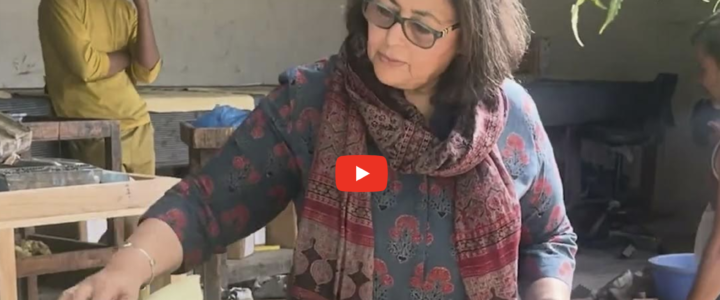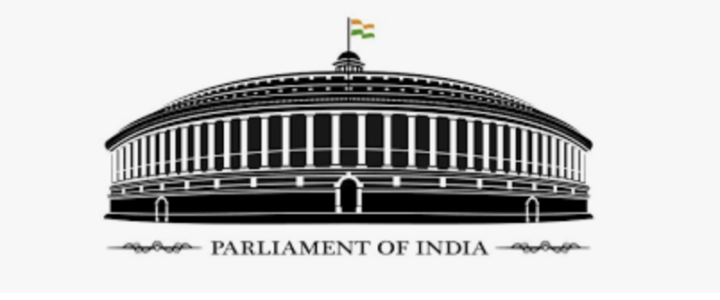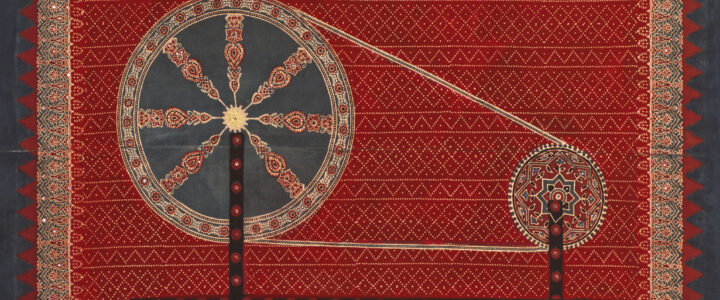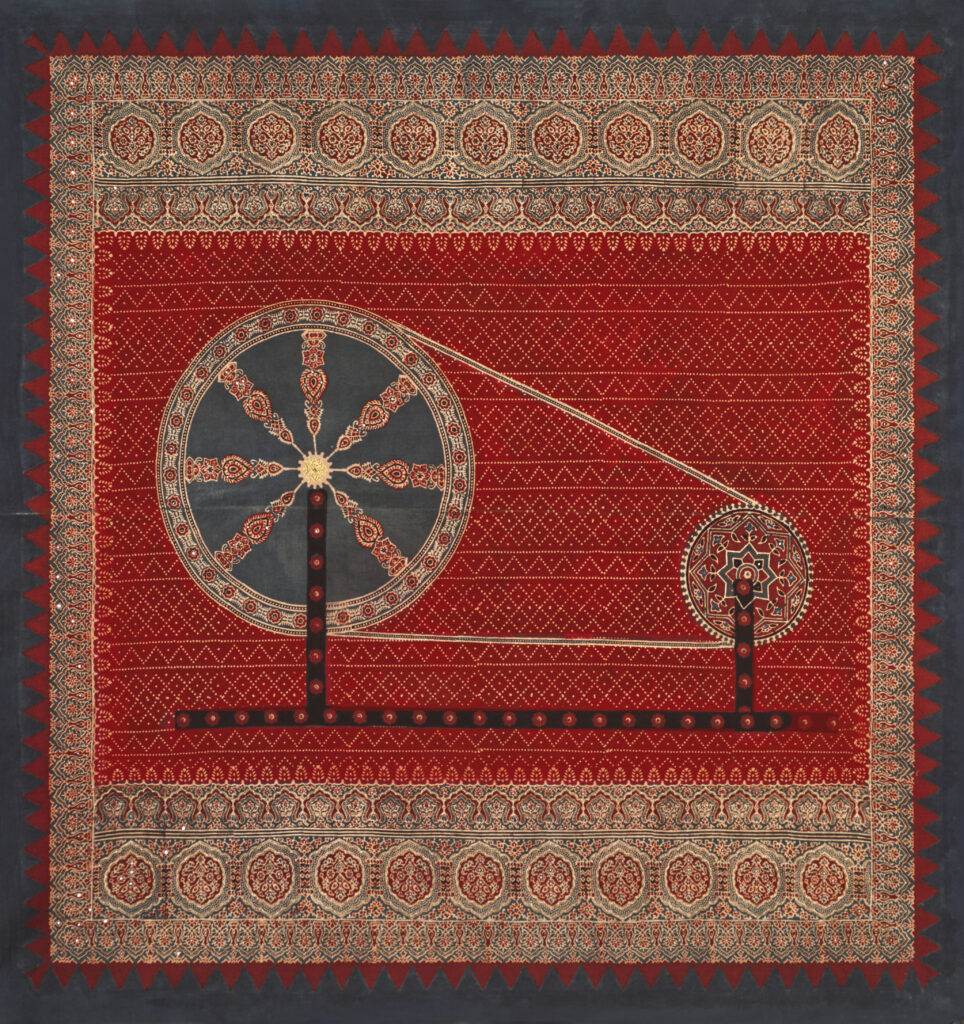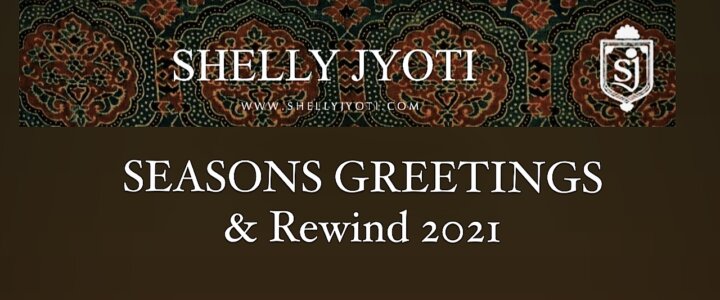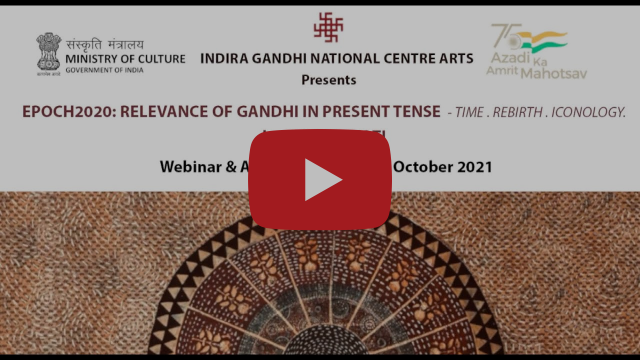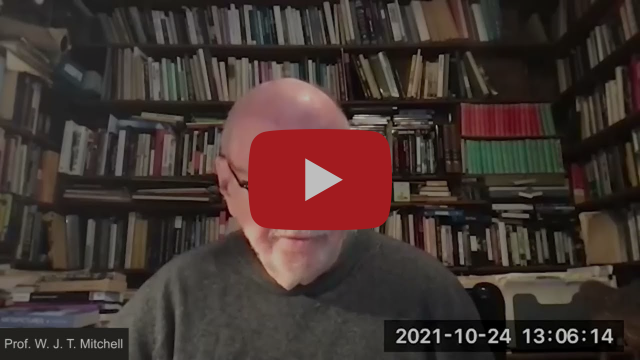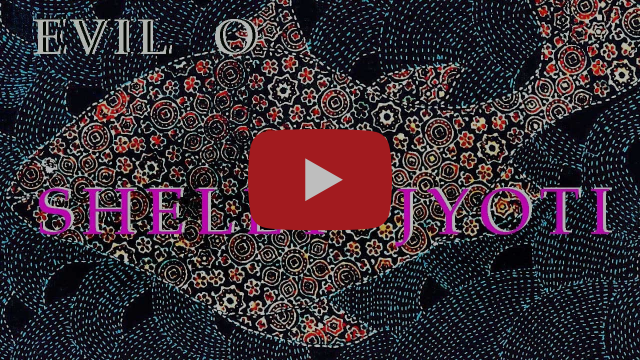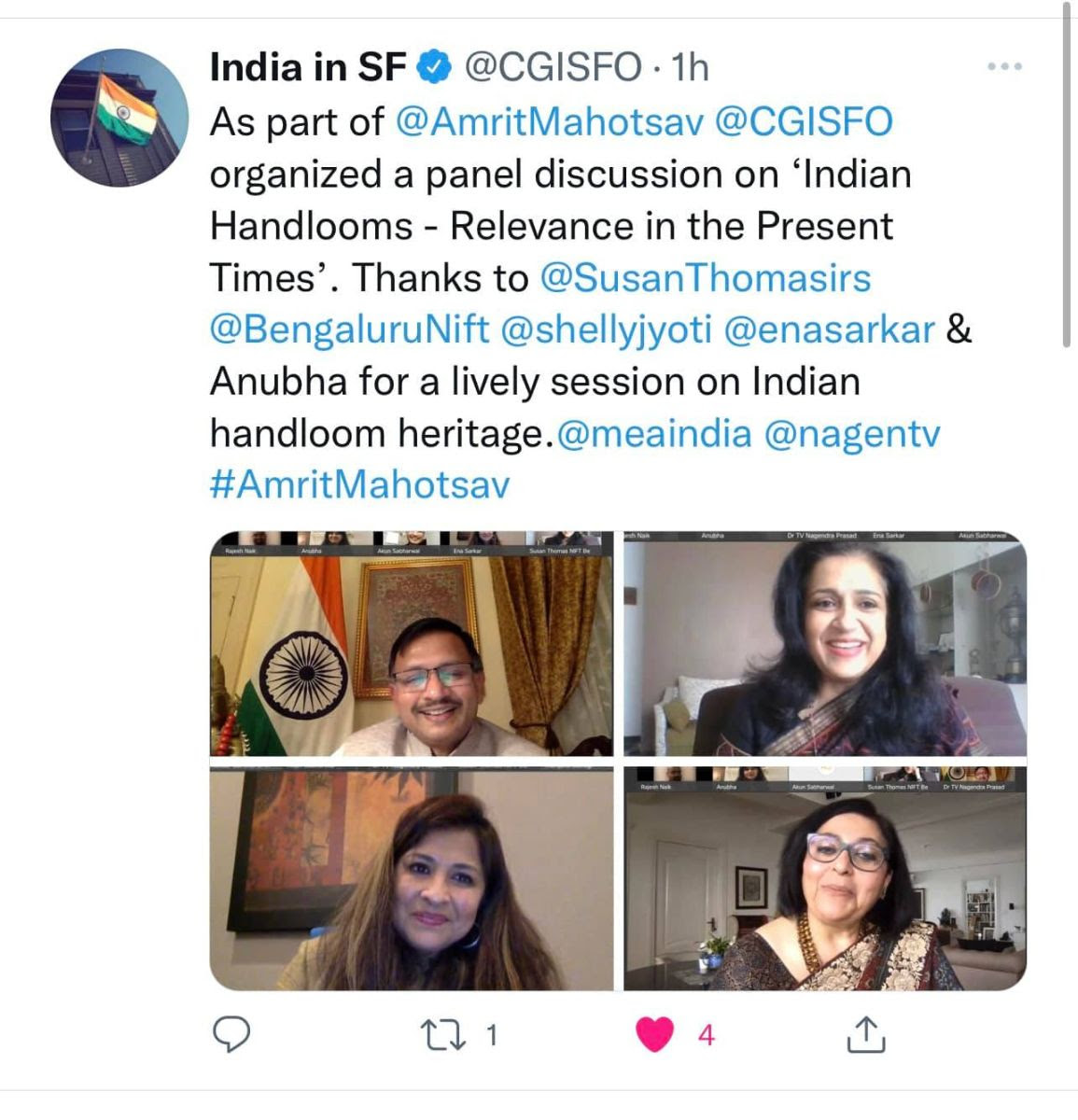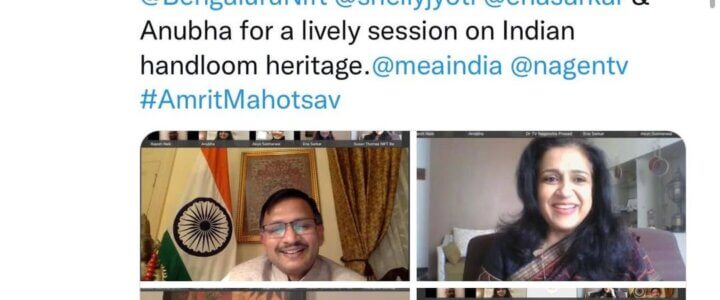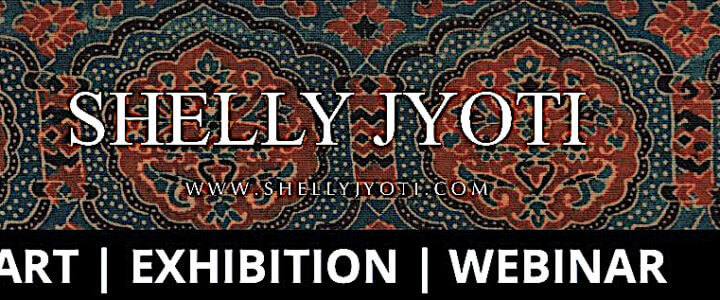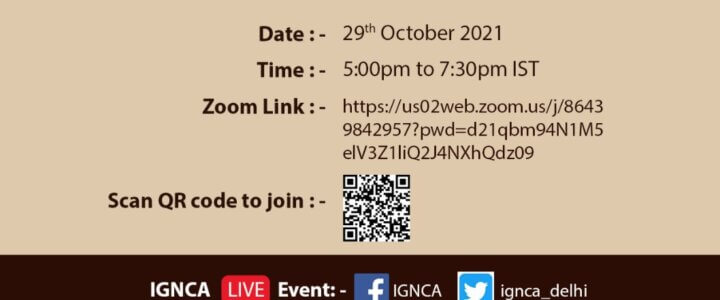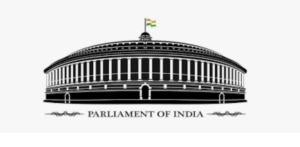
“swavlamban’ series can be viewed at Shilp Deergha Gallery in the new Parliamant House
TRIPTYCH OF BLOCK-PRINTED AJRAKH ON HANDSPUN KHADI TO CELEBRATE THE CHARKHA, AND WHAT IT STANDS FOR
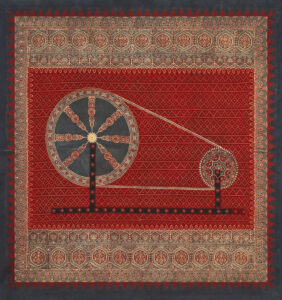
Irrespective of the developments by machines and mills in the last century, the survival of block printed textiles is closely tied to the spirit of s
elf-sufficiency. Still practised in parts of Gujarat, particularly Ajrakhpur in the city of Bhuj (Gujarat) and Rajasthan, and Sindh in Pakistan. Ajrakh is
a unique reverse block-printing technique with natural dyes in which designated areas in the pattern are pre-treated to resist penetration by the dye.
The word, Ajrakh, is derived from the phrase, “aaj ke din rakh” or “keep it for today”, alluding to the traditional process of preparing the fabric for printing. At every stage of the tedious dying process, the fabric is set aside to dry for 3-4 days. Nature plays an important role in the making of Ajrakh. Craftsmen work in harmony with their environment where the sun, river, animals, trees, and mud, are all part of the creative process. Ajrakh prints are predominantly geometrical in combinations of blue, red, white, and black. Ajrakh textile traditions involve 20 odd steps — which include pre-soaking the cloth in a mix of camel dung, soda ash, and castor oil; mixing the dye-resistant pastes from gum and millet flour; and blending secondary dyes from an array of natural sources: yellow from turmeric, brown from rhubarb, orange from pomegranate skin, red from madder root, and black from a boiled syrup of scrap iron, chickpea flour, and sugarcane molasses. Ajrakh printers are largely based in Dhamadka and Ajrakhpur. The latter is a village created in the wake of the massive earthquake that destroyed hundreds of homes in Kutch in January, 2001. It was established with the collaboration of private institutions, the state government of Gujarat, and the villagers themselves. Eventually, they also organised a short road to the village, electricity, a complex of houses, printing establishments for block printers, and even an effluent plant to avoid contamination of local water sources and fields with dyestuffs.
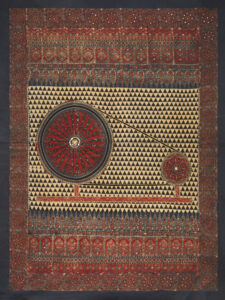
Today, with its proud new name of Ajrakhpur, honouring the traditional craft of block printing in word and spirit, the village is abuzz with activity, tourists, and pride. The natural dyeing of Ajrakh textiles was revived here by the late patriarch of the village’s most famous family, Khatri Mohammadbhai Siddiqbhai. The third generation of the family are now masters of the art, and the entire clan is eminently well-known nationally and internationally for its skills and talent in evolving a large variety of colours in natural dyeing. They work with highly renowned designers from India and abroad to produce masterpieces in textile art. This installation is a triptych titled, ‘Charkha — the Wheels of Svavalamban.’
The charkha (spinning wheel) symbolises unity, freedom, and self-sufficiency, reminding us of the Swadeshi Movement during India’s freedom struggle, when it stood for making our own products. The idea of creating two charkhas reflects the diversity of people, as a collective whole, strengthening the concept of Svavalamban. These artworks were created in the resist technique with lime, gum, rusted iron, tamarind powder, white clay, alum, alizarin, and powdered dhavedi flower. Wooden blocks used in the artworks belong to 300 to 400-year-old patterns that the craftspeople refer to as kungari, atthas, aery border, fustat gurda kaleji, leheriya, and patri. A symbol of Svavalamban or self-reliance, the charkha connects our past with the present, spinning the threads of India’s long and complex history, standing for all the ideals and aspirations of a free nation.
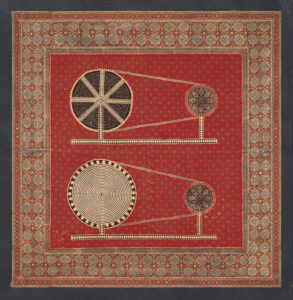
The artist Shelly Jyoti has created these triptych artworks on 100 gm of hand spun, handwoven khadi in collaboration with Ajrakh
artisans, and embroiders- The works feature different charkhas, printed in traditional Ajrakh style, and embellished with tiny mirrors and zari work. The artist has evoked the sentiment, to remind us that our freedom was hard won, and that it can be protected and preserved only through self-reliance.
These works can be viewed in Shilp Deergha Gallery inside the ground floor galleries of New Parliament building.The concept and the work of Shilp Deergha gallery was visualised by Smt. Jaya Jaitley ji, founder/president of Daastkar Haat Samiti along with many designers and crafts people.
 The Mingei International Museum in San Diego has loaned my work, ‘The 18th-Century Merchant Ship’ (2023), for their upcoming exhibition, ‘ Blue Gold: The Art and Science of Indigo’ Co-curated by Emily Hanna and Guusje Sanders, and guest co-curator Barbara Hanson Forsyth.
The Mingei International Museum in San Diego has loaned my work, ‘The 18th-Century Merchant Ship’ (2023), for their upcoming exhibition, ‘ Blue Gold: The Art and Science of Indigo’ Co-curated by Emily Hanna and Guusje Sanders, and guest co-curator Barbara Hanson Forsyth.

